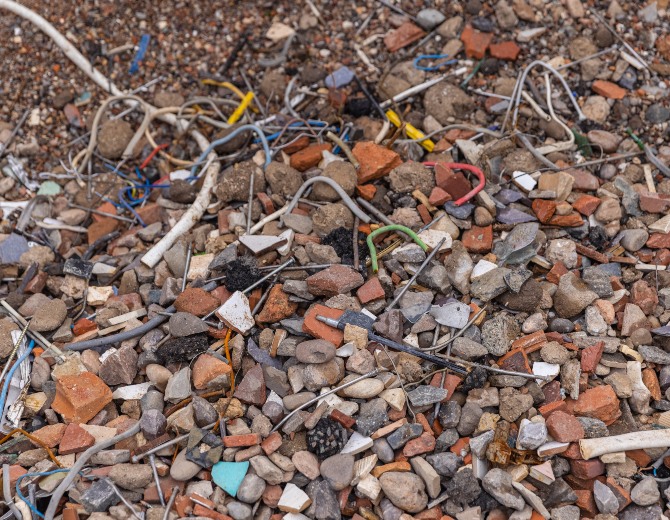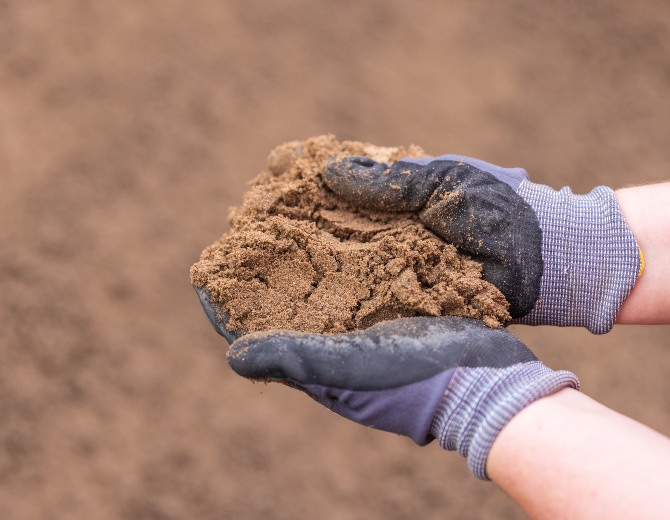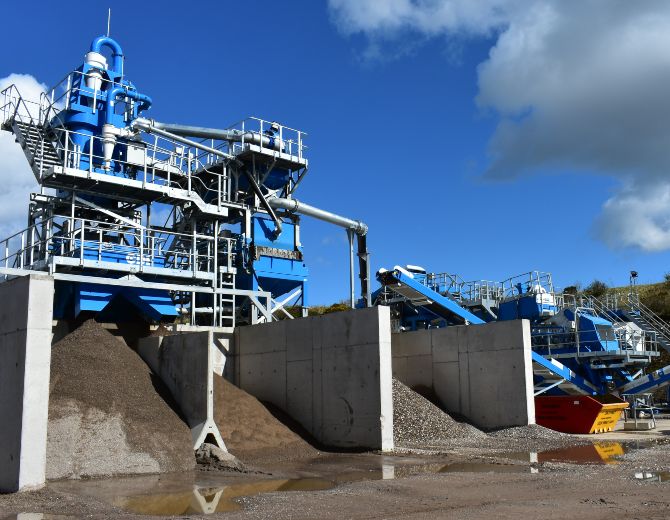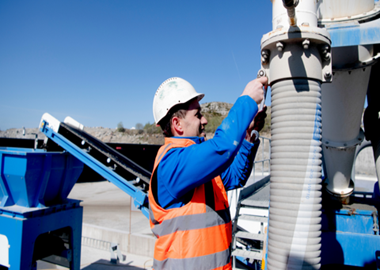Right around the world, society has embraced the circular economy and waste is now considered a valuable resource. Within the construction and demolition (C&D) sectors, millions of tonnes of material are now diverted annually from landfill. The recovered sands and aggregates are repurposed into our buildings and infrastructure, saving finite virgin resources, and reducing CO2 emissions.
This progress has come in phases through changes of mindset, technological innovation and through legislation.
But not all the material that could be recovered is being recovered.
In this latest issue of our Innovation Series, Darren Eastwood, and David Kinloch, take a look at how legislation in the UK has forced a change of approach, and driven innovation to find value in the smallest residue of the recycling process – trommel fines (also known as skip or C&D fines).

Let's not forget the small stuff
The skip waste from construction or building sites is usually separated in a dry process using a trommel. Separated by size, the larger materials flow through the trommel while the smaller fractions, the fines, fall through the mesh. While the larger materials are the sought after products from this process, the trommel fines in their current state have no commercial value and are generally disposed of in landfill sites. As just about anything can be thrown into a skip, the fines that come out the other end are varied and difficult to recycle further.
Depending on the efficiency of the dry process, fines range in size from 10-40mm / .3 -1.5 inches and will typically consist of soil, plastic, paper, wood, metals, polystyrene and other lightweight organics and detritus. Often contaminated with hydrocarbons and other pollutants, it is not possible to separate these further through dry processing.
The UK’s taxation authority, HMRC, took action through the Landfill Tax (Qualifying Material) Order 2011 to avoid harmful materials from skip recycling reaching landfill. This order separates trommel fines into 2 categories with different tax rates applied.
Lower rate trommel fines are made up of materials such as concrete, glass, ceramics, or naturally occurring materials like soil and rocks. Considered inert, it commands a lower rate of tax of £3.25 per tonne at landfill gates. Fines that consist of materials listed in the order and contain no more than an incidental amount of any other non-qualifying material can meet the lower rate criteria.

Strict Compliance
The higher rate trommel fines are those containing hazardous materials that fail the criteria for the lower tax rate and are charged £102.10 of tax per tonne. This classification is determined by the total content of contamination consisting of heavy metals and hydrocarbons. If determined hazardous, the waste is tested for waste acceptance criteria (WAC), which analyses for a suite of leachates and total content.
The main criterion which determines if trommel fines should be charged at the higher landfill tax rate is the Loss on Ignition test, (LOI). LOI is used to determine the material’s organic content by calculating its mass before and after ignition. If more than 10% of the material is lost on ignition, it is charged at the higher rate.
The UK Environment Agency’s “Trommel fines: Chemical Analysis and Waste Classification” report conducted in 2020, found that a high proportion of trommel fines sampled as part of a national campaign were misclassified as non-hazardous, of which 54% contained concentrations of hydrocarbons and benzopyrene and over 60% of the samples exceeded the LOI limit.
As each C&D recycling centre generates thousands of tonnes of trommel fines, it became clear that an alternative solution was required as landfill sites would have no option other than to refuse the high-rate fines or risk penalties. Landfill operators are responsible for all materials that are disposed of in their facility and, if a material is accepted, misclassified as lower rate and charged accordingly, they will have to pay the difference. Therefore, compliance is strict.
Without a solution for fines, there is an existential risk to C&D recycling centres business models.
The inherent nature of trommel fines meant that developing a solution to process them has only been possible due to the continual refinement of our technologies, processes and lessons learnt in our existing waste recycling plants.
Working with pioneering customers, we have developed dedicated trommel fines wet processing plants which now take this material through multiple stages from start to finish. This includes feed systems to manage this type of tricky material, eddy current separators for the removal of ferrous and non-ferrous metals, density separation for the removal of light weights, including polystyrene, and organics, high attrition scrubbing to remove contaminants, sizing, sludge filtration and water recycling.
Operators are now extracting the valuable sands and aggregates from trommel fines, diverting 80% to 95% from landfill and producing saleable construction products. This process converts a financial burden to the operator into a revenue stream, producing quality products that are sold into their local circular economy.

Engineered For Zero Waste
The remaining material which cannot be further recycled comes through the process as a concentrated filter cake, saves tens of thousands of pounds in landfill taxes.
As with all our processes, trommel fines recycling will continue to be refined with further innovation. The variable nature of the feed material means operators must proactively manage their process to ensure the output materials pass LOI testing. Some materials such as Gypsum, which is not supposed to be disposed of in skips, still makes its way into the process, and presents a major challenge. Each operator must carefully control their inputs to minimise contaminant intake.
Further development of the processes used to recycle trommel fines have been applied to glass recycling and we look forward to exploring this further in the series.
Ultimately, 100% recycling is the goal of all of us passionate about waste recycling. To achieve sustainable resource management, we need to keep getting better. For every tonne of recycled materials produced from trommel fines and used in the circular economy, we save a tonne of virgin material and progress further towards sustainability.




